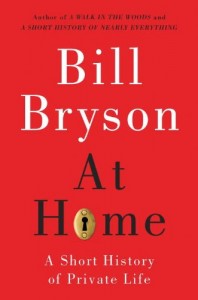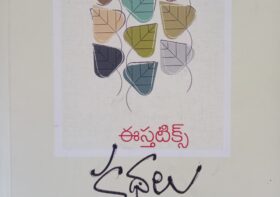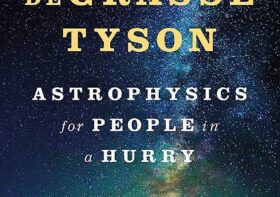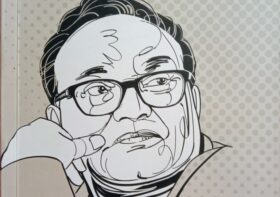Bill Bryson’s At Home: A Short History of Private Life
 Many of us now live in homes that are very different from where our fathers spent their childhood, which in turn may be different from the homes that their forefathers spent their lives in. The places we live (and work) now are illuminated well and often have air-conditioning; they have running water and privies with flush toilets. The indoor kitchens are smoke-free with gas and electric appliances. We have ample entertainment indoors (television, DVD players, computers, game stations etc…) and plenty outside too. Now, think about the way our great grandparents lived. Go even further back and think about the way their grandparents may have lived – the materials and designs used for the houses they lived in, the way they dressed, cooked, ate, worked, entertained and slept.
Many of us now live in homes that are very different from where our fathers spent their childhood, which in turn may be different from the homes that their forefathers spent their lives in. The places we live (and work) now are illuminated well and often have air-conditioning; they have running water and privies with flush toilets. The indoor kitchens are smoke-free with gas and electric appliances. We have ample entertainment indoors (television, DVD players, computers, game stations etc…) and plenty outside too. Now, think about the way our great grandparents lived. Go even further back and think about the way their grandparents may have lived – the materials and designs used for the houses they lived in, the way they dressed, cooked, ate, worked, entertained and slept.
Bill Bryson, a prolific writer of American origin living in England, does just that. Bryson and his family now live in Norfolk in a home, a rectory actually, built in 1851 by a clergyman. A chance finding of a previously unknown space in Bryson’s attic piqued his curiosity about the house and the various things inside the house. He realized that there is much in the house that he has only a vague knowledge about. Why are there only shakers for salt and pepper, but not for other condiments? Why are there only four tines in a fork? How and when did we come up with light bulbs, refrigerators and gas cooking-stoves? The house with the many objects in it has suddenly become a mystery.
So, Bryson gets this “idea to make a journey around it (the house), to wander from room to room and consider how each has featured in the evolution of private life. The bathroom would be a history of hygiene, the kitchen of cooking, the bedroom of sex and death and sleeping, and so on.” Bryson, with his experience in writing history (one of his previous books was A Short History of Nearly Everything), decided to write a history of the world without leaving the house.
Bryson quickly discovered that it was not an easy task. “Houses are amazingly complex repositories. What I found, to my great surprise, is that whatever happens in the world – whatever is discovered or created or bitterly fought over – eventually ends up in one way or another, in your house. Wars, famines, the Industrial Revolution, the Enlightenment, they are all there in your sofas and chests of drawers, tucked into the folds of your curtains, in the downy softness of your pillows, in the paint on your walls and the water in your pipes… Houses aren’t refuges from history. They are where history ends up.”
So, Bryson takes each room of the house, the Hall, the Kitchen, the Scullery and the Larder, the Drawing room, the Dining room, the Bed room, the Bath room, the Cellar and the Attic, and, of course, the Garden and explores them in detail. How did each of these rooms come about? How were those rooms used and how that use changed over time and ended up the way it is right now? What drove these changes? What happened in the immediate vicinity and the far corners of the world that contributed to these changes? He takes historical facts and many documented anecdotes and weaves a fascinating dynamic picture starting in the not too remote past and ending in the current day. In this process, he also discusses, in addition to the private living, the various societal aspects of living as well.
I found this to be an engrossing read. I could relate some of this to our own society. I have spent a part of my childhood in villages and homes that did not have electricity and were a bit removed from the progress that was permeating other parts of the world scarcely a few miles away. Some parts of the book relate more to the industrialized western society, more particularly to England, and to a smaller extent to US. That should not distract us from the book as many of the themes are universal.
Let us take lighting as an example. Before the advent of gas, kerosene and electricity, the poor apparently used ‘rush lights’ (meadow rushes, coated in animal fat) for lighting. The better off used candles made of tallow (animal fat) or beeswax. The affluent used oil lamps, but oil was quite an expensive commodity. Best light of all came from whale oil, particularly oil from the spermaceti in the head of the sperm whale. Three hundred thousand whales were killed in a forty year span in mid 1800s for this business (Moby Dick was inspired by this hunt for whales). Whales were on the verge of vanishing, but were saved by a chain of events. Abraham Gesner, in 1846, distilled kerosene from coal tar and realized that it was great for lighting. Then, a man named George Bissel accidentally learned about rock oil in Pennsylvania, figured out that it could make an excellent illuminant and set out to get oil out of the ground. After 6 years of trying, his associate, ‘colonel’ Edwin Drake, on August 27, 1859, finally was able to pump out from the ground underneath a viscous blue-green liquid that we now call petroleum. That, as we all know, changed the world forever.
Bissell distilled this gunk and discovered that it yielded gasoline and kerosene. Gasoline had no practical use and was thrown away as a waste product. But, kerosene, which could be produced very cheaply, became available for illumination and became popular very quickly. About the same time, natural gas also became available and was used for illuminating large spaces. In 1879, Edison came up with his electric light bulb, and on September 4, 1982, threw a switch that illuminated 800 electric bulbs in 85 buildings. Edison was able to demonstrate that an electrical distribution system can be safely built and inaugurated the modern era of indoor and outdoor lighting. The availability of electricity in homes, in turn, led to the development of other domestic appliances.
Consider now the impact of the electric light bulb (and other appliances) on the life-style. It made easy many things that were previously either impossible or possible only with great expense and effort. The lack of cheap, reliable, good quality lighting really limits what one can do after the sun sets; it is difficult to dine, read or entertain; it limits productivity of offices and factories; outdoor travel becomes perilous. Flip a switch and throw some light all around, and, voila!, profound changes in social and economic dynamics!
The same is true of the impact of many other discoveries and innovations as well. The discovery and availability of cement and steel drastically changed what was possible in building. Tea found its way from China to England, and England’s need for cheaper tea resulted in India developing vast tea estates. Columbus’s discovery of the new world led to the migration of potatoes, tomatoes, sunflowers, chillies, green peppers, eggplants (brinjals), chocolate and vanilla from the Americas to Europe and then to Asia and completely transformed the cooking and eating habits of the world population.
As noted earlier, Bryson’s discussion of changes in life-styles is primarily centered around England, and extends a bit to America. It focuses very sharply on the changes in the life-styles within a specific period in a specific society. It clearly does not have the global scope of Jared Diamond’s Guns, Germs and Steel- Fate of Human Societies – which is a lot more anthropological in nature. However, this book is of interest because our own society went thru similar transformations too in the last two centuries; I could not help think about those changes as I kept reading this book.
Bill Bryson writes briskly and with a lot of humor. He makes things interesting. His writing is liberally interspersed with fascinating facts, anecdotes, stories, legends and history. A nook in the wall where the telephone used to reside starts him talking about the development of communications and the discovery and history of telephones. The reading habits of 1850s lets him segue into the history of lighting as well as the birth of the petroleum industry. The salt and pepper shakers give occasion to the grand place pepper and spices enjoyed for centuries in world trade. The stairs give occasion to a discussion about the appropriate dimensions of the steps so that accidents can be avoided. There is a large section on the use of ice before the development of the modern refrigeration processes. During the course of the book, we come across quite a few historical personages, their triumphs and their foibles. I can probably come up, on short notice, with at least a hundred different things of interest that I came across in this book,
I had a great deal of fun reading this book and learned a lot as well. I strongly recommend this to anybody with an interest on how things came about.
—
At Home: A Short History of Private Life
Bill Bryson
Double Day 2010
497 pages
—
Dr. V. Chowdary Jampala, Professor and Associate Chairman of Department of Psychiatry at Chicago Medical School, is interested in books, movies, art, politics and governance, and all things Telugu. He is active in many community organizations including Telugu Association of North America (TANA) and Foundation for Democratic Reforms in India (FDRI). For other articles by him at this site, click here.




ఒక వేసవి – Bill Bryson: One Summer – America, 1927 | పుస్తకం
[…] క్రితం, బిల్ బ్రైసన్ రచించిన, At home, A short history of private life, చదివాను. అతని రచనా శైలి, చిన్న చిన్న […]
rayraj
>>Bill Bryson writes briskly and with a lot of humor. He makes things interesting. His writing is liberally interspersed with fascinating facts, anecdotes, stories, legends and history.
Yes
>>
..Houses aren’t refuges from history. They are where history ends up.
Brilliant! the way he makes things interesting.
But i could not figure out how it can be done in telugu.By giving this interesting intro in english, you made me feel that it is more difficult than i thought.
సౌమ్య
Thanks for introducing the book. Seems to be an interesting one!